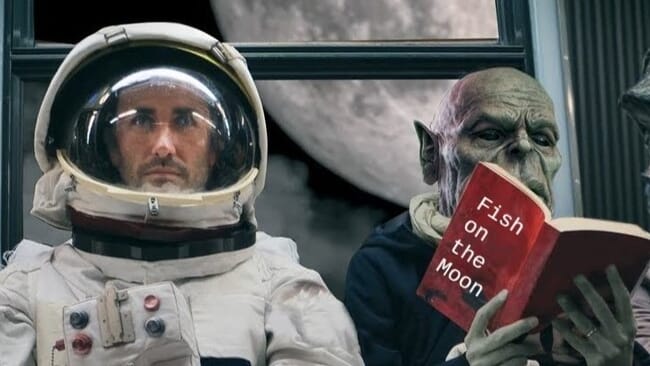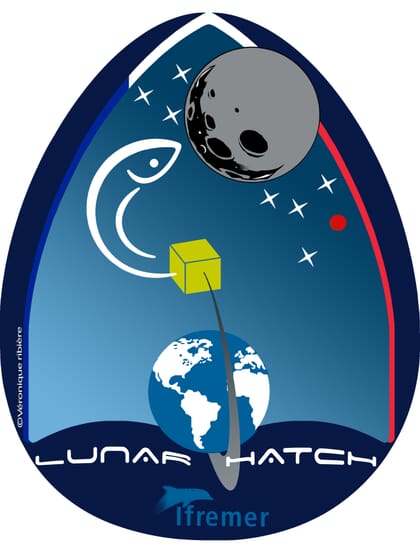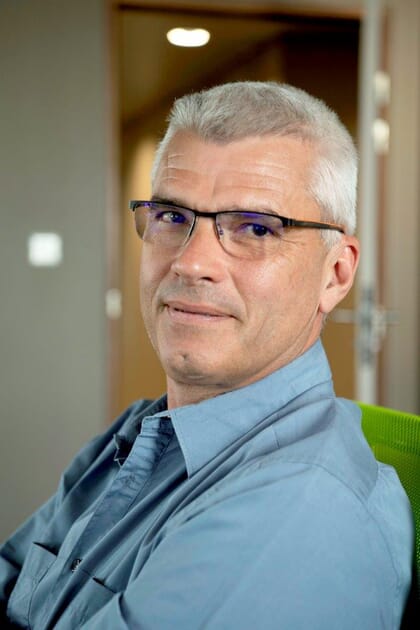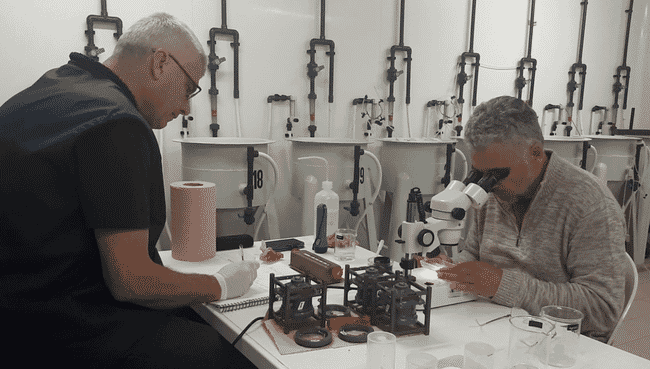Spearheaded by the French Institute of Research and Exploration of the Sea (IFREMER) and Montpellier University Space Centre (CSUM), Lunar Hatch is designed to enhance the self-sufficiency of future communities on the Moon and Mars. The researchers intend to send fertilised fish eggs into space in nanosatellites, then to the Moon itself. However, in the meantime, they will need to select the right candidate species and test their suitability both to the rigours of space flight and to their ability to thrive in artificial environments on other worlds.

© Cyrille Przybyla, IFREMER
Why would it be important to eat fresh produce in space?
While we are currently considering sending men and women to live on the Moon or even on Mars, feeding these new space pioneers is a major key to the success of such missions.
In the long term, it would be unsustainable to eat only lyophilised [freeze-dried] products on a Moon or Mars space-base and, over time, the products lose vitamins C, B12 and K.
Why have you been chosen to lead the project?
Because of my research into the development of aquaculture species in closed systems, the recycling of effluents with micro-algae and the use of new sources of proteins and lipids in aquafeeds. On Earth, my road map is “sustainable aquaculture”. We have to convert the molecules from aquaculture effluents, hoping to preserve the biodiversity of the environment. The concept could be the same on the Moon because all molecules are precious.

© Ribière Consulting
What makes aquatic organisms suitable to send into space?
In order to maintain a healthy, balanced diet, humans need to consume lipids and to vary what they eat. Aquatic organisms could be great candidates for survival in such a hostile environment, as they are able to withstand the vibrations during launch, space radiation, the absence of gravity and atmosphere and considerable temperature variations.
They are also suitable as they have an excellent feed-conversion ratio (FCR); they consume three times less oxygen than land animals and produce three times less carbon dioxide. Moreover, it is suggested that the psychological wellbeing of astronauts during long space missions would be improved by the presence of living animal species.
How are the fish going to get there?
In a nanosatellite developed by the CSUM – 200 fertilised fish eggs can be contained in a 1U payload.
What obstacles do you need to overcome?
We’re currently working on the LAUVE Project (LAUnch Vibration on fish Embryo), which involves using a simulator to test the impact of the vibrations caused by a rocket launch on fertilised eggs. The eggs are assessed for the quality of embryonic development, their hatching rate and the viability of the resulting larvae compared to a control group.
Initial results, using sea bass and meagre at two stages of embryonic development, have shown that aquatic organisms are able to cope with the hostile launch conditions. We will then need to look into the effects of radiation, temperature variations and microgravity on egg development, and these assessments will help us to establish which species is most suitable for a trip to the Moon. We plan to have narrowed it down to five to six species by the end of the year. One of the main considerations is that the fertilised eggs must develop autonomously during the three- to four-day trip to the Moon.
We also need to have species that can cope across a range of salinities as we don’t really know the properties of the water available on the Moon.
What’s the timescale of the project?
By 2021, IFREMER and CSUM plan to launch a nanosatellite containing fertilised fish eggs directly from the International Space Station (ISS).
Ultimately, the European Space Agency is currently working to instal a colony, the Moon Village, on our satellite by 2030. By then, Lunar Hatch will have implemented each test phase of the mission and we hope to be ready to help space pioneers to enjoy a healthy, balanced diet.
Have fish been taken space before and, if so, how did they fare?
Very few studies on fertilised fish eggs in conditions of microgravity have been done. However, in 1973, the Skylab 3 mission boarded 50 fertilised eggs of the mud minnow (Fundulus heteroclitus), a small saltmarsh fish, as well as several juvenile specimens. Forty-eight of the eggs had produced larvae by their third week on the space station – a hatching rate of 96 percent.
In 1994, in the International Microgravity Laboratory (IML-2), 43 eggs of the an ornamental fish species called medaka (Oryzias latipes) were fertilised in space, from which eight fry hatched. The unhatched eggs were then sent back to Earth, and a further 30 fry hatched within three days of landing (Ijiri, 1998).
In 2007, the Biorisk experiment exposed redtail notho (Nothobranchius guentheri) eggs on the exterior of the Russian segment of the International Space Station (ISS) for one month. This species is an ornamental fish with the unusual characteristic that it produces eggs that incubate in dry conditions.

© Laurent Boutonnet
Why are fish more suitable for growing in space than other forms of livestock?
Teleost fish are very ancient animals and have changed little over the 38 million years that they’ve been around, despite no shortage of changes of conditions on the Earth in this time, and we suspect that fish will prove to be robust beyond earth too.
What do you see as being the main challenges for hatching and growing a fish in space?
In my opinion, exposure to cosmic radiation during the trip to the Moon and in the Moon base itself could induce some physiological damage. However, materials have already been developed to reduce this impact on human cells and DNA, and the fish should benefit from the use of similar materials. A significant advantage of using aquatic organisms is that the water can mitigate the effects of charged particles [the most hazardous element of cosmic radiation].
You mention that the presence of fish will help to boost morale in the space station. Might the astronauts be averse to killing them for food?
Rearing fish is likely to have a positive impact on the astronauts, as it gives them a connection to life on Earth, as well as a food source. Whether they will struggle to kill them remains to be seen but – either way – the space psychologists are lucky as they will have an interesting new field of research.
Do you have any culinary tips for the astronauts?
I had a very interesting discussion last year with a person who prepares space meals for the European astronauts. I showed him some pictures of candidate species for space aquaculture and he asked which one’s skin can be removed the most easily. It’s essential to minimise food waste, and any waste must be able to be recycled.

© Cyrille Przybyla, IFREMER
What will happen after Phase 1?
The next phase will focus on the impact radiation has on embryo development during space flight. We also want to work on slowing down the development of the embryos to allow for longer flights if needed, as adverse weather can delay the launch of rockets and we don’t want the fish to hatch before reaching the Moon base.
From 2021 the priority is to put the eggs into orbit in a CubeSat or on the ISS for further proof of concept, but the best test would be to be part of a Moon mission. I’m in contact with the French space agency (CNES) and the European Space Agency (ESA) and would like this innovative programme to have European involvement, but will also consider plans from other space nations.
Will the astronauts need a crash course in aquaculture?
Of course, one of the crew will need to be trained to look after the fish – in the same way that astronauts have already been trained to grow tomatoes or potatoes in space. Being a space farmer is already a career!
Who’s funding your research?
The French Space Agency (CNES) is currently funding a student on the species-selection project, while all the vibration experiments are funded by IFREMER. My challenge now is to find a funded collaboration. From a biological point of view – the focus on fish eggs’ tolerance to the space environment – our team should be ready at the end of 2021. But the main challenge is designing a tank to house the eggs in space.




